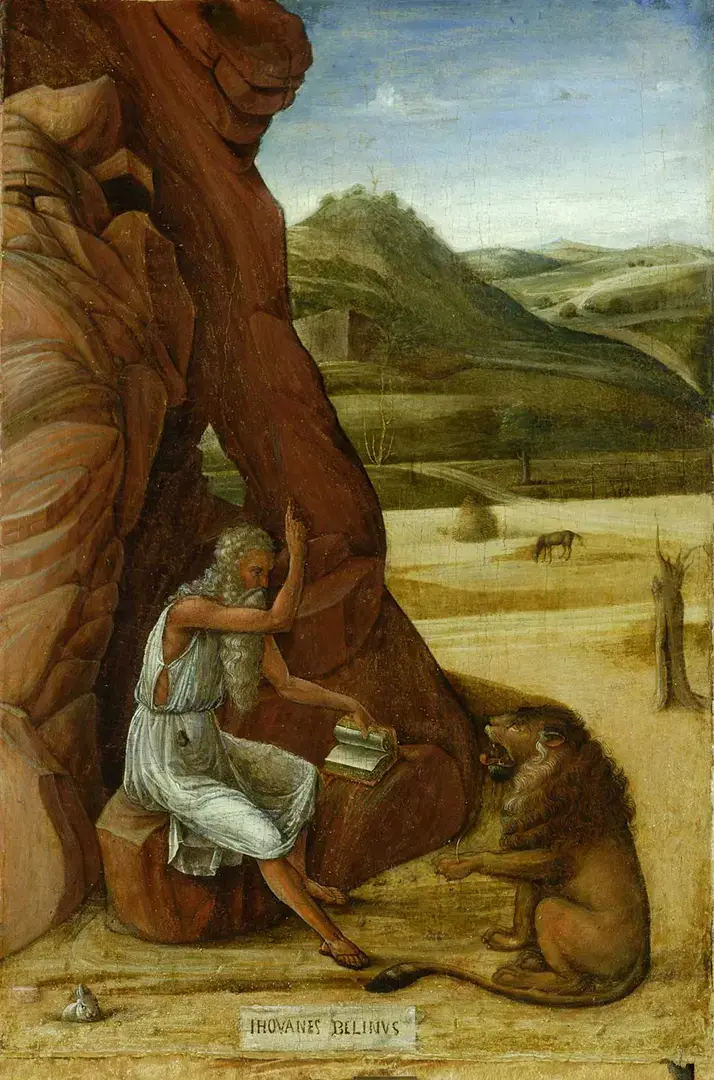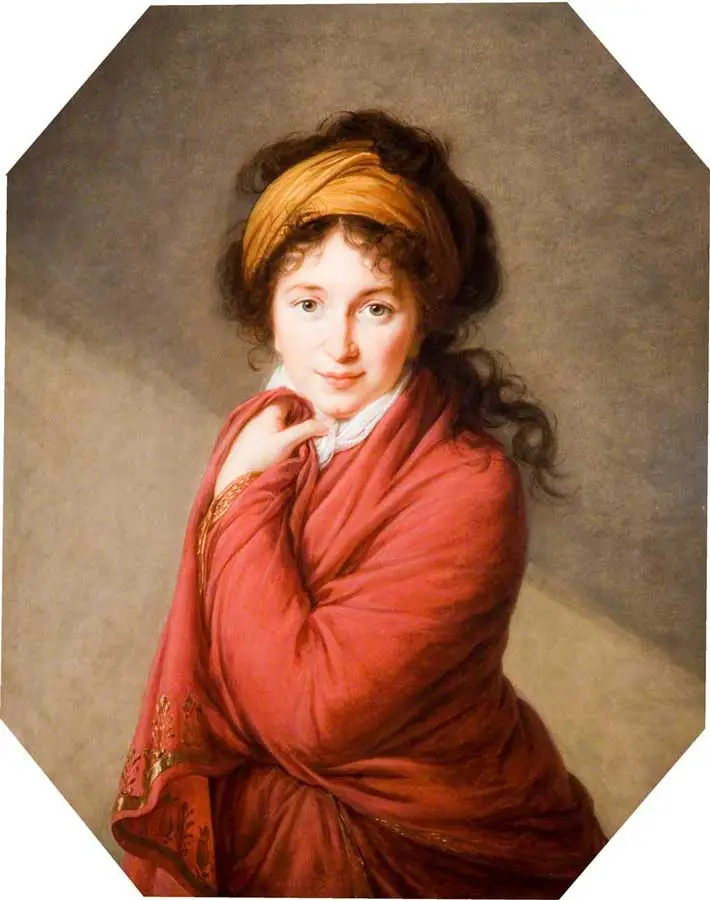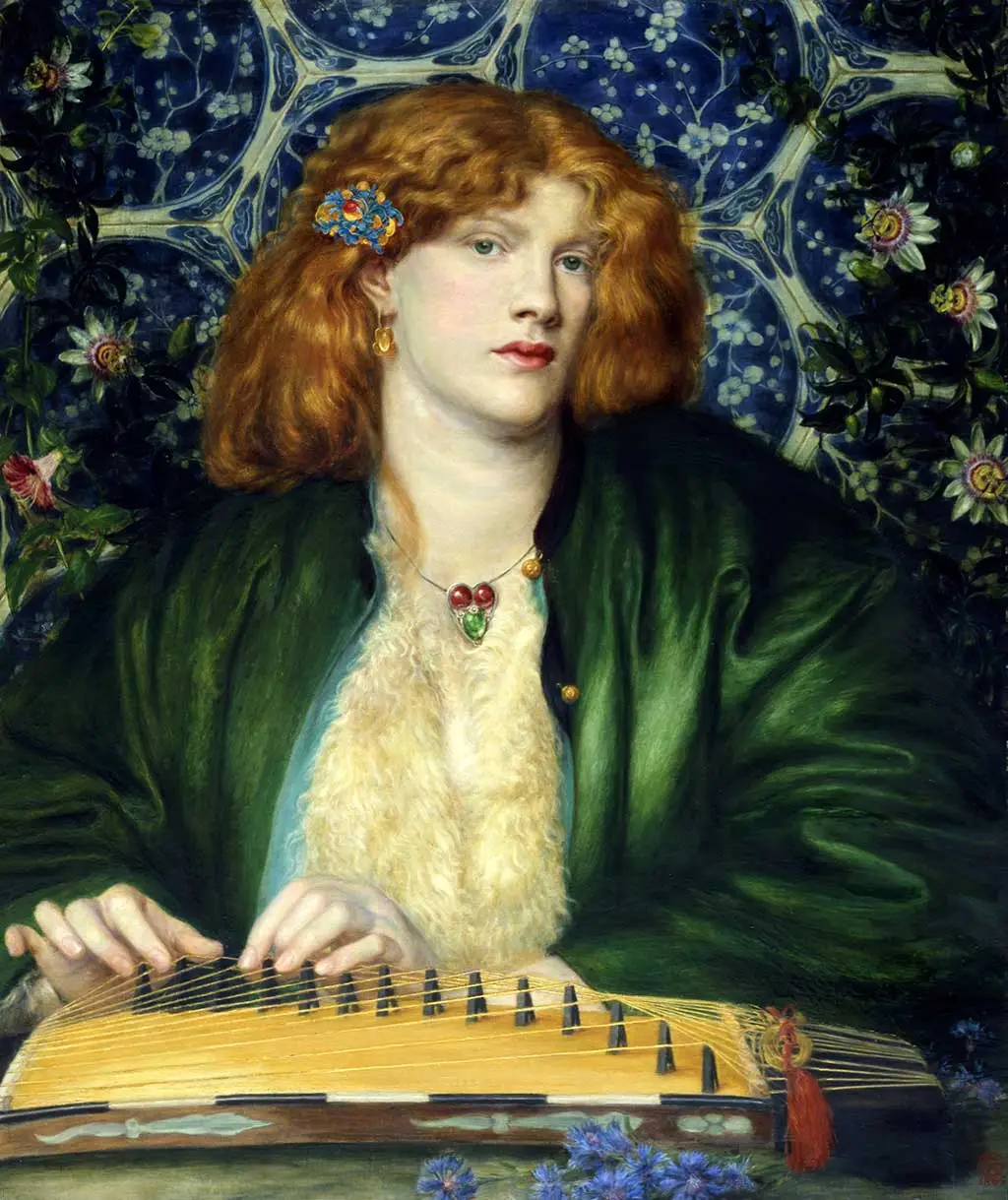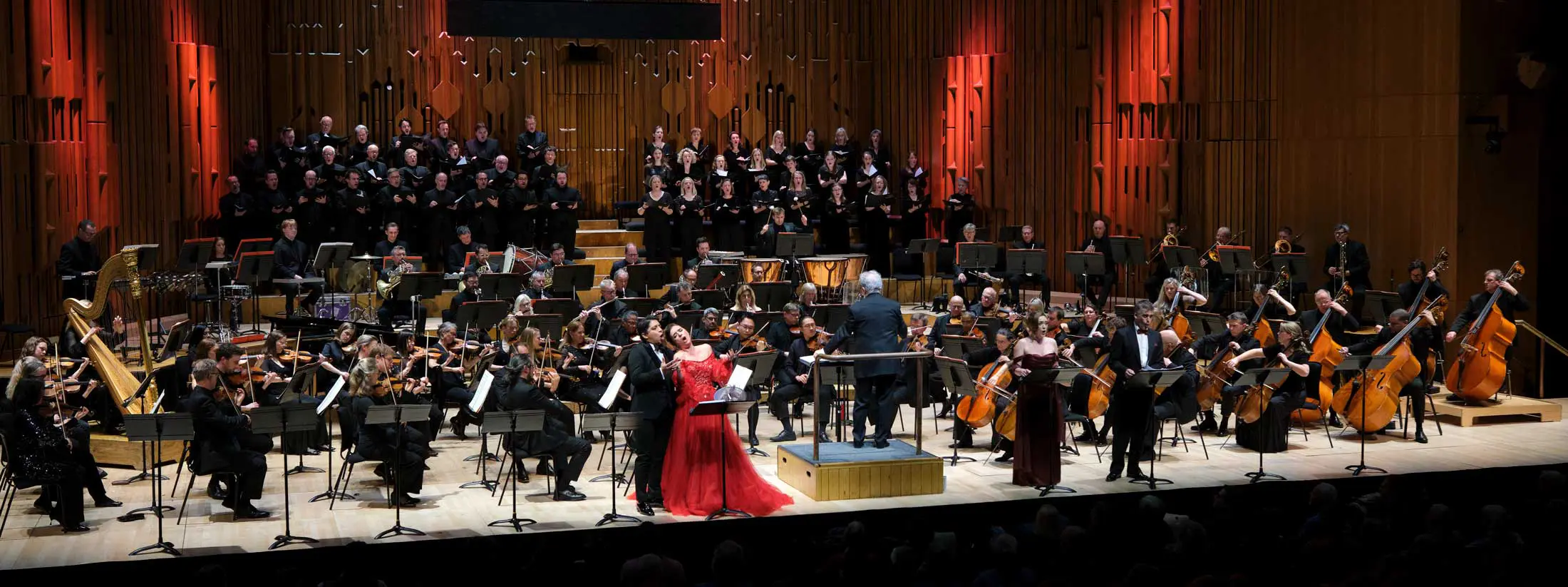Intertwined in a lover’s knot – or a leggy pretzel – the nubile Deianira is seen smooching a well–fit Hercules in Hercules and Deianira (1517) by Jan Gossaert. In Giovanni Bellini’s St Jerome in the Wilderness (1460) the patron saint of learning appears to be teaching a lion to high-five.

Elisabeth Vigée-Lebrun’s Countess Golovina (1797-1800) meets our gaze directly, in a manner that is both self-confident and revealing. The religious sister and art historian Wendy Beckett insisted that no man could have painted such a spontaneous, intimate and superb portrait of a woman.

Judging by Dante Gabriel Rossetti The Blue Bower (1885) – a depiction of his housekeeper and mistress Fanny Cornforth plucking a toko, a Japanese string instrument – Sister Wendy may have had a point. Rossetti seems less interested in his lover’s inner life than in her sultry allure, her voluminous red mane, and distinctly italianate green cloak lined with white fur.

These are just four of the eighteen exceptional paintings from the Barber Institute of Fine Arts that will be on display at the Courtauld Gallery until 22 February 2026. The Barber Institute is currently closed for major building works that will improve accessibility and bring back live concerts to the institute’s concert hall.
The Courtauld Institute of Fine Arts in London is the ideal venue for this temporary loan, as it shares several similarities with the Barber Institute. Both galleries were founded in 1932 by wealthy individuals, and are affiliated with universities. However, unlike Samuel Courtauld, Lady Barber –who established the museum on the outskirts of Birmingham – didn’t possess a significant art collection. Instead she created an endowment fund that, over the course of 70 years, enabled the development of a world class collection of paintings, sculptures and decorative arts spanning a couple of millennia. The Barber’s coin collection, comprising around 16,000 objects, is among the most impressive in the world.
The Barber Institute’s rich holdings remain relatively unknown, partly due to its location. But the Courtauld, although much better known, also deserves to find a wider audience.
The Gallery is home to Britain’s finest collection of Impressionist and Post-Impressionist art. It boasts the most significant holdings of paintings by Cézanne and Seurat in the UK. But there’s much more. First-time visitors are always surprised to discover some of the Impressionist movement’s most iconic works in the Great Room, including Manet’s A Bar at the Folies Bergère, Gauguin’s Nevermore, Degas’ Two Dancers, and van Gogh’s dramatic Self-Portrait with Bandaged Ear, painted not long after he mutilated his left ear.
Now the Courtauld adds to its impressive collection three more impressionist masterpieces on loan from the Barber Institute: Claude Monet’s The Church at Varengeville (1882), Toulouse-Lautrec’s A Woman seated in a Garden (1890) and Edgar Degas’ bold composition Jockeys before the Race (1878/79), a work that seems to draw inspiration from Japanese woodblock prints.
But my favourite painting on loan from the Barber Institute is the small, rather erotic oil on panel by the Antwerp Mannerist Jan Gossaert, already mentioned at the beginning of this article.

Hercules and Deianira is untypical for the Flemish Renaissance period, particularly because of its overt nudity and sensuality. Yes, Deianira’s breasts might resemble 1980s breast implants, but set that detail aside for a moment. Look more closely and you’ll notice that she is seated on the very cloak given to her by the centaur Nessus – an ominous sign that Hercules doesn’t have long to live.
According to myth Hercules killed Nessus with a poisoned arrow to save Deianira from being raped. But as he lay dying, Nessus handed Deianira his cloak, telling her that his blood was a powerful love potion. He convinced her to keep a sample. Deianira later married Hercules, but after a few years, fearing his infidelity, Deianira tried to rekindle his passion by sending him the tunic, now soaked in the blood of Nessus. Hercules put it on – but rather than igniting passion, the poison penetrated his skin. The burning pain led to Hercules choosing self-immolation over eternal suffering.
Jan Gossaert’s painting shows the couple in happier times, reminiscent of Adam and Eve before the Fall.
Listen to the Barber Institute’s Head of Collections Robert Wenley as he discusses Jan Gossaert’s masterpiece – one of the museum’s true treasures. Sister Wendy Beckett also weighs in, and as always when discussing nubile subjects, she can’t help but admire these gorgeous bodies, made in the image of God.
Sister Wendy has a takeaway for all virile young men as well: ¨You don’t need a [ banging big] club when when you are in the presence of one who loves you¨.
CLICK HERE FOR DETAILS ABOUT THE BARBER IN LONDON. HIGHLIGHTS FROM A REMARKABLE COLLECTION


